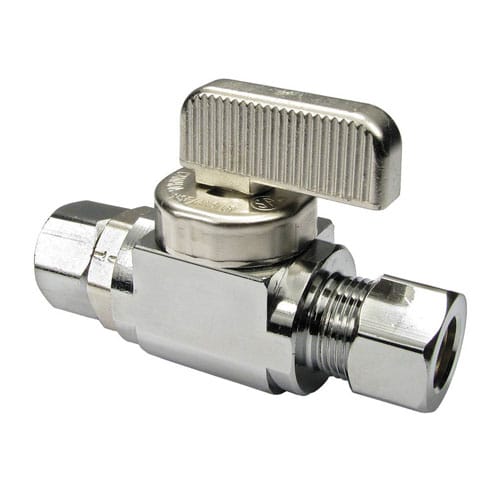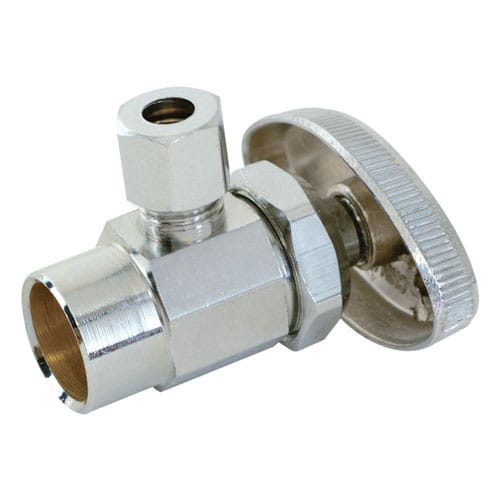The most common valves a homeowner will encounter are stop valves. Stop valves are found under the sink and behind our toilets. They are created to isolate specific fixtures in our house and turn the water off. When changing out a kitchen faucet or a toilet with a stop valve in place there is not a need to turn the main water valve off for the entire house. The main valve for the entire house is important and every homeowner should know where (usually in the front of the yard) and how to operate.
Stop valves come in two different types – compression valve and ball valve. The difference is how they function. Also, the materials that are used in making the valves is also important.

A compression valve works by turning the handle to lower a stem with a washer to stop the flow of water. The stem with washer will compress against a seat to seal off the valve. Over time the washer can wear out due to the sediments in the water and the pressure from the actual compression of the valve. A compression valve will take several turns to turn it off and on. When they are old, they can be difficult to turn off and on. The construction of the valve varies with some using a plastic stem. The plastic can break and wear out and is not desirable for the long term. If you are using the compression make sure it is made of brass.
A ball valve is also referred to as a 1/4 turn. The valve uses a ball that has a hollowed-out tube section that when turned, will allow the water to flow through. When the lever is pointing in the direction of the pipe the water is on, when it is perpendicular to the pipe it is off. A ball valve is easy to visually inspect and know if it is on or off. The ball valve is a little more expensive than the compression but only by a little.
Our preference is the ball valve for the ease of use, visual identification of off/on, and the longevity.

